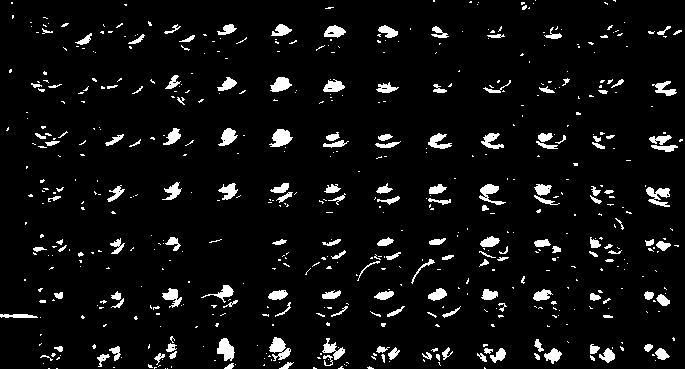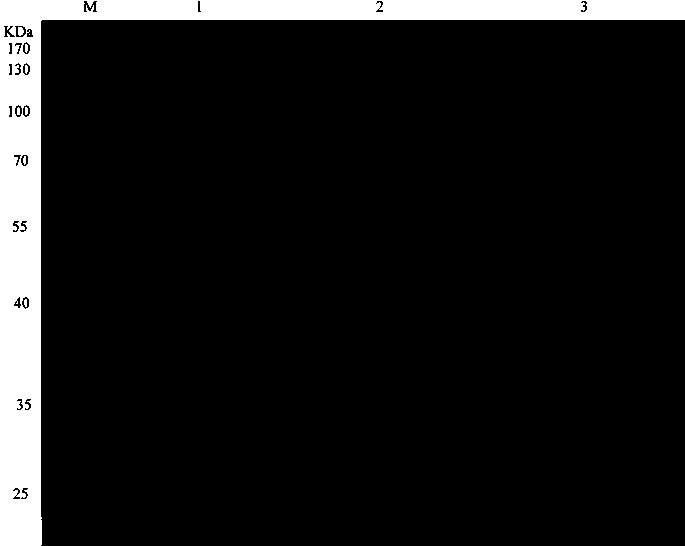Genes and proteins for prosthetic group-free chloroperoxidase CPO822 and application of genes and proteins
A technology of prosthetic chloroperoxide and prosthetic chloroperoxide is applied to the gene and protein of prosthetic chloroperoxidase CPO822 and its application fields, and can solve the problem of undetectable peroxidase and peroxidase. Catalase activity, narrow range of reaction substrates, etc., to achieve the effect of strong stability at high temperature and broad application prospects
- Summary
- Abstract
- Description
- Claims
- Application Information
AI Technical Summary
Problems solved by technology
Method used
Image
Examples
Embodiment 1
[0048] Obtaining metagenomic DNA from soil samples:
[0049] The samples were collected from the surface soil of the oil field blowout in Nanyang City, Henan Province.
[0050] Take two 50mL centrifuge tubes, weigh the surface soil of the oil field, add 8g of each tube, add DNA extraction buffer 18mL (containing 100mM EDTA, 100mM sodium phosphate, 1.5M NaCl, 1% CTAB and 100mM Tris-Hcl, pH 8.0), vortex Rotate and shake to mix, shake at 220 rpm, treat at 37°C for 30 min, then add 2 mL of 20% SDS to each tube to make the final concentration 2% (w / v). Then put it in a water bath at 65°C for 2 hours, and gently invert it up and down several times every 15 minutes to mix well. Centrifuge at 6,000g at room temperature for 10min. After collecting the supernatant, transfer it to a clean centrifuge tube, add an equal volume of chloroform:isoamyl alcohol (24:1, V / V), and gently invert up and down to mix. Then centrifuge at 11,000g for 20min at 4°C to collect the supernatant, add 0.6 ti...
Embodiment 2
[0052] Construction of metagenomic library and DNA sequence acquisition of papermaking wastewater sediment:
[0053] 1. Construction and preservation of oilfield soil metagenomic library:
[0054] The oilfield soil metagenome DNA extracted in Example 1 was partially digested with Bam HI enzyme, and a 2.5-7.5 kb digested fragment was recovered by electrophoresis. The recovered DNA fragment was ligated with the pUC118 vector (Takara Company) that had been digested and dephosphorylated by Bam HI, transformed into E.coli DH5α competent cells by electric shock, and coated with 100 μg / mL ampicillin (Amp), 40 μg / mL X-gal and 0.5mM IPTG LB solid plate, thus constructing a metagene library with a storage capacity of 10,000 transformants and good diversity. Pick all white colony clones and inoculate them in a 384-well plate containing library medium for overnight culture on a 37°C culture shaker, and store at -80°C.
[0055] 2. Screening and sequence analysis of target genes:
[005...
Embodiment 3
[0059] Obtaining recombinant proteins expressed from DNA sequences:
[0060] 1. The positive clones obtained in Example 2 were inoculated in 5 mL of LB medium (100 μg / mL Amp), cultured on a shaker at 220 rpm at 37° C. overnight, and plasmids were extracted.
[0061] 2. Design primers CPOF and CPOR, respectively introduce EcoR I and Hind III restriction sites that can be inserted into the E. coli expression vector pet32a at both ends of the primers, and remove the stop codon.
[0062] The nucleotide sequence of primer CPOF (upstream primer) is shown in SEQ ID NO: 3: CCG GAA TTC ATGAAGACGTTGACAGTT;
[0063] The nucleotide sequence of primer CPOR (downstream primer) is shown in SEQ ID NO: 4: CCC AAG CTT TTAGGAGTTGATGAATTTGAGGATG;
[0064] 3. Using the extracted plasmid as a template, PCR amplification was performed using primers CPOF and CPOR.
[0065] The total volume of the PCR system is 30 μL, including 15 μL of Taq mix (Tiangen Company), 1 μL of each of the two prim...
PUM
| Property | Measurement | Unit |
|---|---|---|
| molecular weight | aaaaa | aaaaa |
Abstract
Description
Claims
Application Information
 Login to View More
Login to View More - R&D
- Intellectual Property
- Life Sciences
- Materials
- Tech Scout
- Unparalleled Data Quality
- Higher Quality Content
- 60% Fewer Hallucinations
Browse by: Latest US Patents, China's latest patents, Technical Efficacy Thesaurus, Application Domain, Technology Topic, Popular Technical Reports.
© 2025 PatSnap. All rights reserved.Legal|Privacy policy|Modern Slavery Act Transparency Statement|Sitemap|About US| Contact US: help@patsnap.com



